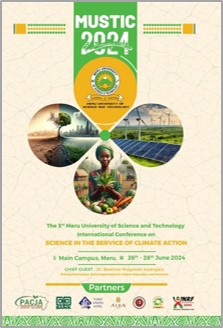a Risk Predictive Model for Coronary Artery Disease using Machine Learning.
Abstract
Risk Predictive Model for Coronary Artery Disease using Machine Learning.
A systematic Review.
Gikabu Catherine Kinya, Dr. Samson Munialo
Abstract
Heart disease is a regular occurrence and one of the leading causes of death all over the world. Among these diseases, coronary artery disease (CAD) is one of the common diseases around the world. Early identification and accurate risk prediction of Coronary Artery Disease (CAD) can enable timely interventions, potentially reducing morbidity and mortality rates associated with the disease. Predicting cardiac illness is a difficult undertaking, it is necessary to automate the process in order to avoid the risks connected with it and to inform the patient well in advance. This paper presents a systematic literature review of existing Risk Predictive Model for Coronary Artery Disease using Machine Learning. The paper provides a detailed analysis of Machine Learning Techniques such as Random Forest Tree Classification, Decision Tree Algorithm and K -Nearest Neighbor Algorithm (KNN) and Logistic Regression in relation to their effectiveness and accuracy in predicting CAD. The existing Machine Learning techniques’ performance are evaluated on the basis of their strength, weakness and the level of accuracy in predicting CAD. The study reveals the need to improve the accuracy of Machine Learning techniques by leveraging on the power of various Machine Learning techniques for early identification of individuals at high risk of developing coronary artery disease (CAD). The study also proposes integration of a wide range of patients’ data to enhance the accuracy and effectiveness of machine learning techniques in risk prediction.
Keywords: Coronary artery disease, Risk prediction, Machine learning, Predictive model.
Downloads
Published
How to Cite
Issue
Section
License
Copyright (c) 2025 Meru Universty of Science and Technology International Conference (MUSTIC)

This work is licensed under a Creative Commons Attribution-ShareAlike 4.0 International License.

